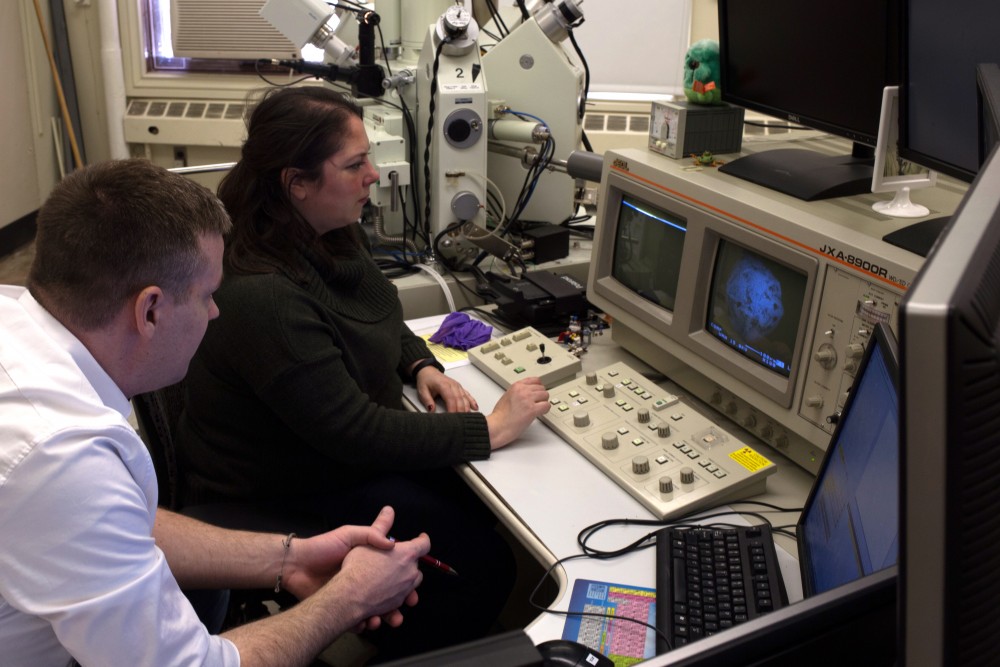A local amateur scientist is partnering with a University of Minnesota researcher to identify micrometeorites from Twin Cities rooftops.
Scott Peterson, a military veteran, stay-at-home-dad and engineering student, works with a University research associate and her brand-new technology to image and identify the composition of his samples of tiny rocks from space. Peterson started collecting the samples around 2010 and first succeeded in finding a true sample last year.
2017 was a big year for Peterson. His first child was born and he began his partnership with Department of Earth Sciences research associate Anette von der Handt. They got in touch in December when he verified for the first time that one of his samples was extraterrestrial, Peterson said.
When Peterson first started micrometeorite hunting eight years ago, he dragged magnets through his storm gutters, following instructions from an article he saw on Facebook — a far cry from the advanced technology he uses in von der Handt’s lab today.
Peterson relied on mentorship from University of Oslo geosciences researcher Jon Larsen to advance his micrometeorite hunting techniques, which can be a complicated endeavor.
“I started to search for stardust in 2009, and all the other scientists considered it impossible to find one extraterrestrial dust particle among trillions of terrestrial ones,” Larsen said in an email to the Minnesota Daily.
Understanding which types of roofs — where most micrometeorites are found — are best for stardust hunting is key to Peterson’s hobby. Old, flat vinyl roofs give him the best probability of finding micrometeorites, he said.
Once on top of the roof, Peterson looks at the pattern of water flow to determine where he is most likely to find samples, then collects dirt from the roof and takes the samples home. From there, he digs through the dirt for grains of sand from outer space.
He said he found his first true micrometeorite in October, and since December he has confirmed 20 total samples by using a microprobe — which can provide information about whether rocks have certain markers of extraterrestrial origin — in von der Handt’s lab.

Von der Handt said she’s looking forward to testing Peterson’s samples with the new microprobe. This new device replaces the University’s old microprobe, which was purchased in 1993, she said.
“These machines tend to be very, very expensive,” von der Handt said. “They last quite some time, but it was time to replace that one, specifically as it’s also the only microprobe here in Minnesota that is in an academic institution and more or less the only one within a couple of states. So people come from afar [to use it].”
As Peterson improves his micrometeorite hunting, he has also taken on a mentee, Chris Colvin. He is a member of the Air National Guard, working in logistics, and sees micrometeorite hunting as a challenge and a way to escape his desk job.
Colvin has collected meteorites for about two years, since he found out about micrometeorite hunting through Larsen’s Facebook page. He hopes that he’ll be able to make scientific contributions through this work.
“That’s the thing about micrometeorites is that it’s still a very … budding … field, even outside of amateurs, so I think there’s definitely some potential,” Colvin said.

















